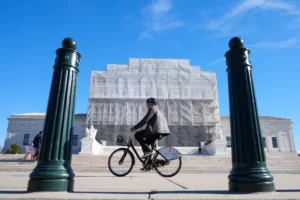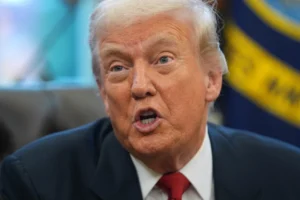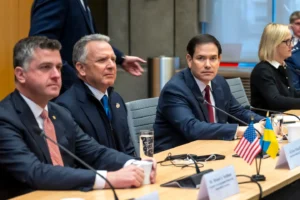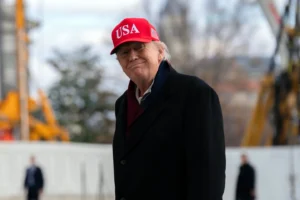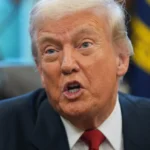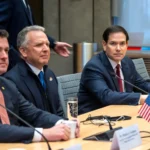Trump Floats Cutting China Tariffs to 80% Ahead of Meeting as He Looks to Deescalate Trade War
- Published In: Politics
- Last Updated: May 09, 2025
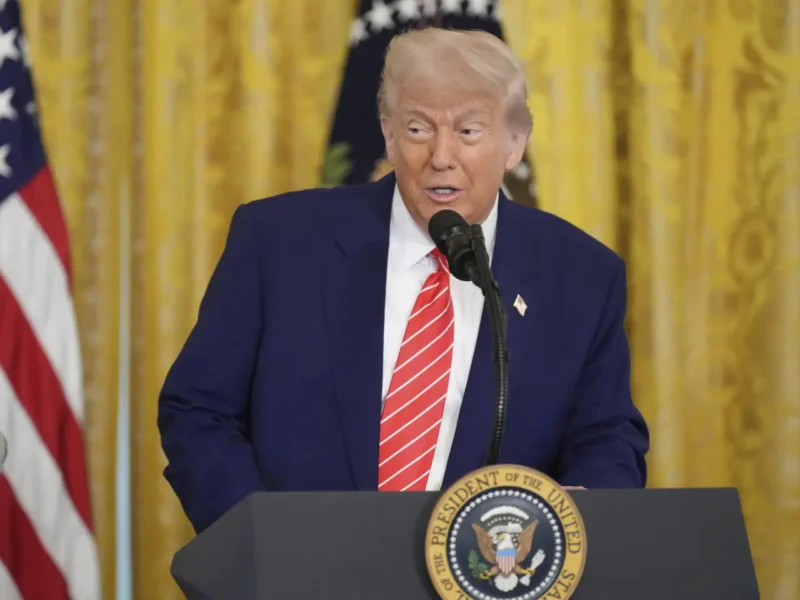
President Donald Trump speaks at an event for Military Mothers, Thursday, May 8, 2025, in the East Room of the White House in Washington. (AP Photo/Jacquelyn Martin)
BY SEUNG MIN KIM AND JOSH BOAK
WASHINGTON (AP) — President Donald Trump on Friday floated cutting tariffs on China from 145% to 80% ahead of a weekend meeting among top U.S. and Chinese trade officials as he looks to deescalate the trade war between the world’s two largest economies.
Top U.S. officials are set to meet with a high-level Chinese delegation in Switzerland in the first major talks between the nations since Trump sparked a trade war with stiff tariffs on imports.
“80% Tariff on China seems right! Up to Scott B,” Trump wrote on his social media account on Friday morning, referring to Scott Bessent, his Treasury chief, who has been a point person on trade. The Republican president also called on China to open its markets to the U.S., writing: “WOULD BE SO GOOD FOR THEM!!! CLOSED MARKETS DON’T WORK ANYMORE!!!”
Bessent and U.S. Trade Representative Jamieson Greer will meet Chinese Vice Premier He Lifeng in Geneva in the most-senior known conversations between the two countries in months, according to announcements this week by the Trump administration and the Chinese commerce ministry. It comes amid growing U.S. market worry over the impact of the tariffs on the prices and supply of consumer goods.
No country has been hit harder by Trump’s trade war than China, the world’s biggest exporter and second largest economy. When Trump announced his “Liberation Day” tariffs on April 2, China retaliated with tariffs of its own, a move that Trump viewed as demonstrating a lack of respect. The tariffs on each other’s goods have been mounting since then, with the U.S. tariffs against China now at 145% and China tariffs on the U.S. at 125%.
The U.S. tariff includes a 20% rate tied to Trump’s claim that Beijing has failed to stem the flow of chemicals used to manufacture fentanyl, and this portion of the tariff is unlikely to be brought up in this weekend’s talks.
While an 80% tariff level on Chinese goods would represent a significant reduction from the current 145%, it would still be an extremely high import duty that could create supply chain problems and push up prices.
And even with the reduction, the tariff rate would still be higher than the combined 74% rate on China that Trump announced at his April 2 “Liberation Day” event.
For China, experts say Beijing would insist that any agreement from the U.S. side would be credible and implemented.
Trump had previously said that he wouldn’t lower the tariffs against China to hold substantive talks. But he showed signs of softening during an Oval Office appearance on Thursday, when he said he “could” lower the 145% rate charged on Chinese goods if the weekend talks go well.
“We’re going to see,” Trump said. “Right now, you can’t get any higher. It’s at 145, so we know it’s coming down.”
The president’s team has acknowledged that the 145% tariff was not sustainable, as taxes at that rate were effectively an embargo on any trade between the two countries.
But it remains unclear how Trump can reconcile the contradictions in his stated goals. He wants large amounts of tariff revenues to offset his income tax cuts, but he also wants deals to increase market access for U.S. goods that would likely require lower tariffs. His aides have said he wants to isolate China, yet his tariffs on other trade partners make it difficult to create a durable alliance on trade.
Trump’s social media post was another sign that the president has essentially been publicly negotiating with himself on tariffs. He’s started, paused, tweaked and then threatened more import taxes, constantly reversing himself while balancing his promises to address inflation with his claims that tariffs can tilt the global economy in America’s favor.


